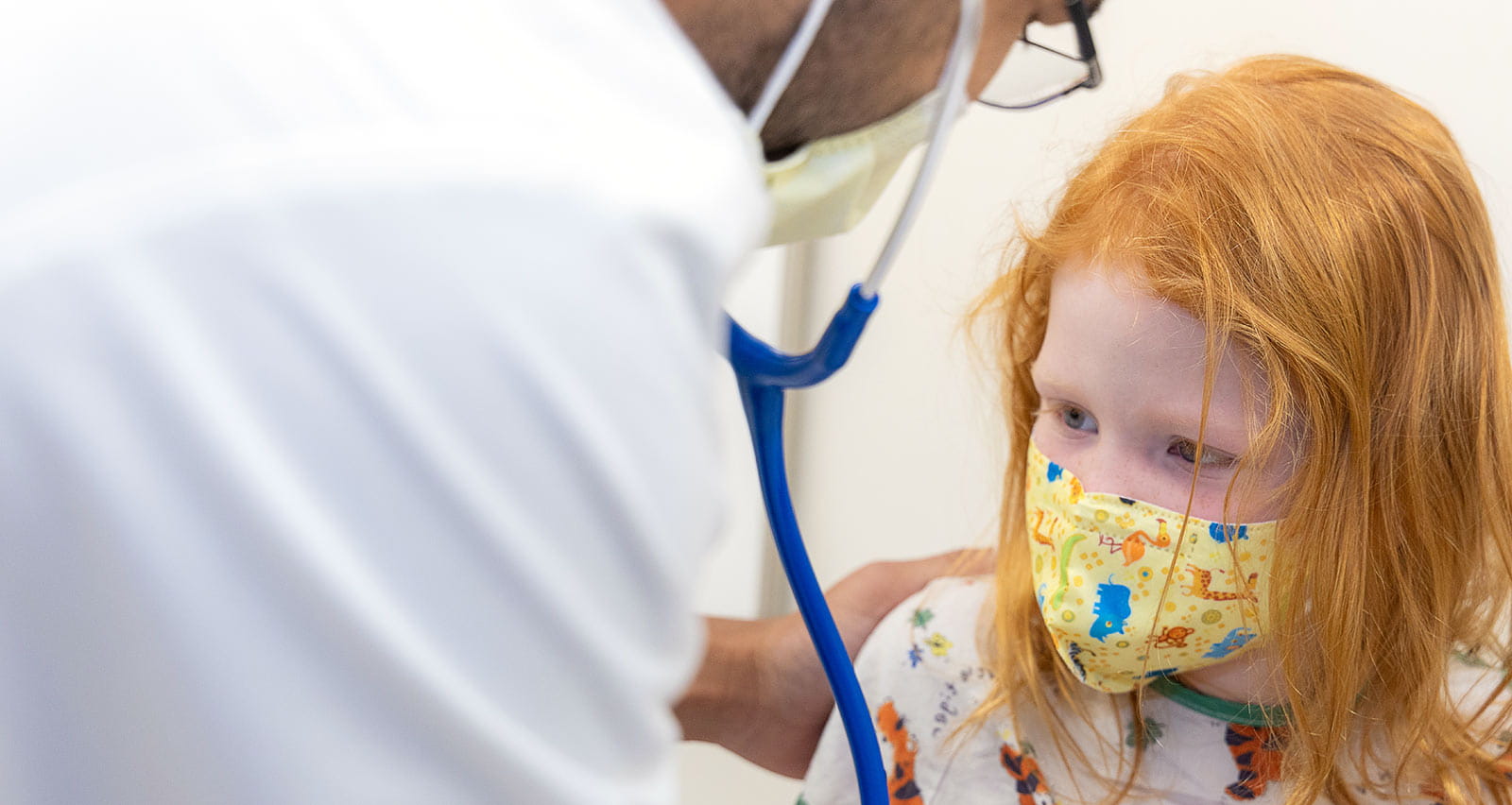
Juvenile Dermatomyositis
Juvenile dermatomyositis is a rare autoimmune disorder that causes skin rash and muscle inflammation, which can lead to weakened muscles. Symptoms usually first appear in children aged 5 to 10, and are twice as likely to affect girls. JDM affects about 3,000 to 5,000 children and teens in the U.S.
Schedule an Appointment Today
To schedule an appointment with one of our juvenile dermatomyositis experts, call 216-844-7700.
Causes and Symptoms of Dermatomyositis
The exact cause of JDM is unknown, though an improperly working immune system is thought to be a factor. Some experts believe exposure to an infection or virus may trigger the disease in children who have a genetic predisposition to it.
Symptoms of JDM usually appear slowly, but can sometimes develop more quickly. The severity of symptoms vary by child, but can include:
- Rash that appears on the eyelids, and joints such as the knuckles, elbows, knees and ankles
- Muscle weakness, especially in the neck, shoulder, back and hips
- Muscle pain
- Fever
- Fatigue
- Trouble swallowing
- Joint pain and inflammation
- Irritability
- Lack of interest in activities
- Weight loss
- Calcium deposits under the skin (calcinosis)
Diagnosing and Treating Juvenile Dermatomyositis
Diagnosing JDM begins with your child’s provider performing a physical exam and discussing the child’s symptoms and health history. Your child may also undergo a series of tests, including blood tests, electromyogram and magnetic resonance imaging (MRI) scan. Other tests may include muscle and skin biopsies and a nailfold capillarscopy, which examines the child’s nailbed to look for abnormalities.
While there is no cure for JDM, the symptoms can be managed, allowing the disease to go into remission. The goal is to provide a treatment plan that will reduce muscle inflammation, decrease pain, and improve strength and function. Your child’s individualized plan will depend on severity of the condition, as well as other factors such as the child’s age and their specific symptoms.
Treatment options include anti-inflammatory medications such as steroids, medications to treat skin symptoms, and physical/occupational therapy to improve muscle function. Lifestyle modifications that can be helpful include exercise, diet changes and supplements, and skin care adjustments, such as the vigilant use of sunscreen. Counseling with our pediatric psychologist can also help if your child is suffering from depression, anxiety or other behavioral issues related to their condition.
Schedule an Appointment Today
To schedule an appointment with one of our pediatric rheumatologists, call 216-844-7700.


